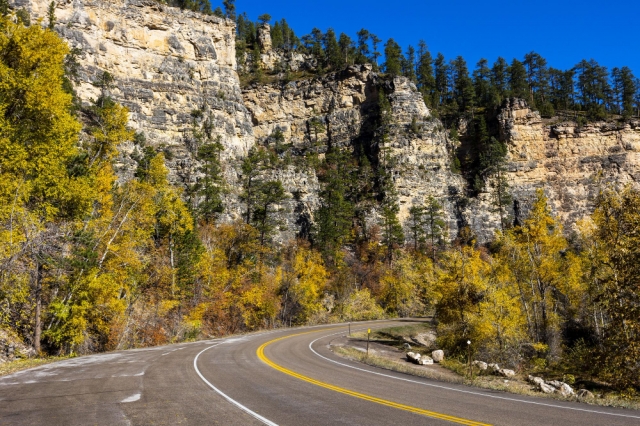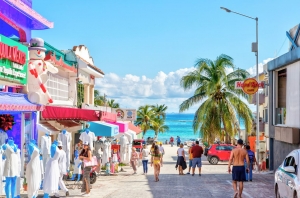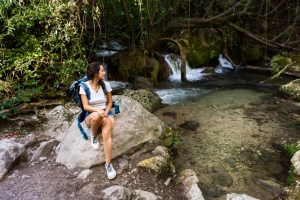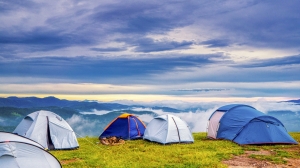The Poudre Canyon, located just west of Fort Collins, Colorado, is a popular destination for motorcyclists, offering breathtaking views and winding roads that make for an exhilarating ride. This scenic route follows the Cache la Poudre River through the Rocky Mountains, featuring sharp curves, varying elevations, and plenty of spots to stop and enjoy the scenery. However, the rugged terrain and unpredictable mountain weather can create unique challenges, so preparing thoroughly is essential for a safe and enjoyable ride.
To make the most of your trip through Poudre Canyon, it's important to know the conditions, pack wisely, and equip yourself with the right gear. Here are some essential tips to help you plan for a memorable ride while ensuring your safety and comfort along the way.
Check the Weather Forecast Before You Go
Mountain weather can be highly unpredictable, with conditions shifting rapidly throughout the day. Before setting out, check the weather forecast to be prepared for any temperature fluctuations, rain, or even snow at higher elevations. Dressing in layers is advisable, as it allows you to adjust your clothing as temperatures change.
If rain or storms are expected, it may be best to postpone your ride or plan for extra stops to wait out any harsh weather. Understanding the forecast and being prepared for changes helps you stay comfortable and safe during your ride, reducing the risk of unexpected complications along the way.
Ensure Your Motorcycle is in Optimal Condition
A ride through Poudre Canyon can be demanding on your bike, so a pre-ride inspection is essential. Check your tire pressure, oil levels, brakes, and lighting to ensure everything is in top shape for the ride. Pay particular attention to your brakes and tires, as the winding roads and elevation changes will put extra strain on these components.
Carrying basic repair tools and a tire repair kit is also a smart precaution, as cell service can be limited in remote mountain areas. Preparing your bike for the specific demands of mountain riding not only enhances safety but also allows you to focus on enjoying the scenic route with confidence.
Plan Your Route and Stops Ahead of Time
Poudre Canyon offers several scenic pull-offs, hiking trails, and picnic areas, so it's a good idea to plan your route and stops in advance. Mark popular spots like Gateway Natural Area or Picnic Rock for a break, where you can rest, refuel, and take in the natural beauty of the canyon. Planning stops gives you a chance to recharge and check your gear, making the ride both safer and more enjoyable.
Knowing where you'll stop also helps prevent fatigue, which can be a concern on long, winding rides. Pre-planning your route ensures that you make the most of the canyon's sights while staying energized and alert throughout your trip.
Ride with a Group if Possible
Riding in a group offers several benefits, such as enhanced safety and a sense of camaraderie during your adventure. A group ride through Poudre Canyon increases your visibility to other vehicles and provides support in case of mechanical issues or emergencies. Additionally, it allows you to share the experience with others who appreciate the unique beauty and challenges of the canyon.
If you choose to ride solo, it's important to inform someone of your planned route and expected return time. This adds an extra layer of safety. Whether you ride with a group or share your plans with others, having help accessible if needed brings peace of mind to your journey through the canyon.
Be Cautious on Sharp Turns and Descents
The winding roads in Poudre Canyon can be tricky, with sharp turns, sudden drops, and steep inclines that require caution and control. Take each curve at a safe, controlled speed to maintain traction and stability, especially as visibility can be limited around bends. Descents can be challenging as well, so practice gradual braking and use both the front and rear brakes to keep control without overloading either one.
Approaching turns and descents with caution is key to staying safe on mountain roads. By managing your speed and being mindful of road conditions, you'll be able to navigate Poudre Canyon's twists and turns more confidently and securely.
Pack Essential Safety and Emergency Gear
Bringing essential safety and emergency gear can make a critical difference, especially when riding through remote areas like Poudre Canyon. Along with basic repair tools, consider packing a first-aid kit, water, snacks, and a fully charged phone. These items are invaluable for managing any delays or unexpected situations, ensuring you're prepared even in isolated parts of the canyon.
It's also wise to know where to find nearby assistance, such as a Fort Collins motorcycle accident attorney, if you need guidance following an accident. Being aware of available support helps you ride with peace of mind, allowing you to fully enjoy the rugged beauty of the canyon.
Stay Alert for Wildlife and Falling Debris
Mountainous areas like Poudre Canyon are home to diverse wildlife, and animals can appear unexpectedly on the road, particularly during dawn and dusk. Riders should also be cautious of falling rocks or debris, as steep canyon walls can lead to sudden obstacles in your path. Staying vigilant and scanning the road ahead will help you spot these hazards in time to react safely.
Maintaining a steady speed and staying focused on the road reduces the chances of sudden encounters with wildlife or debris. Staying alert in these areas ensures a safer ride and allows you to navigate the canyon's natural landscape with ease.
Hydrate and Take Regular Breaks
Long rides, especially through challenging terrain, can be physically taxing, making hydration essential. Bring enough water and take regular breaks at scenic stops to stay hydrated and refreshed. Dehydration can impact concentration, so taking time to rest and drink water is important for maintaining alertness.
Poudre Canyon has plenty of scenic spots where you can pause, enjoy the view, and rehydrate. Regular breaks help prevent fatigue, allowing you to fully enjoy your ride while staying alert and ready for the demands of mountain roads.






